Northern March - Bullwark of Civilization
The Vardanians, knowing they would never conquer all of the Outer Lands, instead decided to wall themselves in, giving in to fear and constant paranoia.
To know people is to know their architecture. To understand a culture is to look at what they are building. When applied to the people of the Great Divide, this yields interesting results. Ferans build grand churches, Nurnese towering temples-fortresses, Anidarans sprawling palaces and Illigarans vast irrigation systems. And then there are the Vardanians, who build walls so colossal that even the Gods may think twice about attacking them.
Northern Fury
Vardania has always faced the threat of invasion from the north. Many times over the millennia, people from the Outer Lands have sought better land to settle, inevitably coming into conflict with the natives. The south usually won in the end, but there seemed no end to the stream of "Barbarians" and a new horde would always appear.
The Northern March was Vardania's answer to this problem. Construction started in the 1610s DA when the Regerian Alliance fortified the lands north of the river Meis. Since then, the March has been continually expanded and built up by various Vardanian states and dynasties, reaching its greatest form in the late 30th century.
Arsenal of the North
The only city in the region, Atria connects the March with the rest of Vardania. More than 90% of all traffic to and from the region moves through the town, which boasts a population in excess of 200,000. It also serves as an arsenal, mainly producing ranged weapons and artillery. While it does not compare to other major arsenals like Nicomeia - Arsenal of the Hegemony or Savena, it is more than sufficient to meet the March's day-to-day needs.
Maze of Steel and Stone
In popular imagination, the March is often seen as a single, towering wall whose base is covered in the bones of the foe. While dramatic and certainly accurate to some degree, it does no justice to the actual construct. The March is a vast network of castles, towers, supply depots, and army camps, all connected via thousands of kilometres of walls of varying height and strength: Wavebreaker First and oldest of the northern walls is the Quea Varamara, commonly known as "the Wavebreaker". A monstrosity of stone and iron over sixty meters tall and nearly twenty meters thick. Its towers and castles are bristling with artillery, ready to turn everything up to a distance of two kilometres into ashes.Mara Devedia
Protected by the Wavebreaker are three military provinces, each dotted with minor fortifications, towers and army camps. The westernmost of these, the Devedia, protects the coast from enemy raids, boasting several military harbours, each containing a squadron of 25 ships. Having to divide its attention between land and sea, however, makes it the weakest of the three provinces in terms of soldiers with a long frontier to protect.
Protected by the Wavebreaker are three military provinces, each dotted with minor fortifications, towers and army camps. The westernmost of these, the Devedia, protects the coast from enemy raids, boasting several military harbours, each containing a squadron of 25 ships. Having to divide its attention between land and sea, however, makes it the weakest of the three provinces in terms of soldiers with a long frontier to protect.
Mara Verdanis
By far the largest of the three military provinces, the Mara Verdanis boasts an impressive number of secondary castles and encampments. It was designed to be the core of the March, with the main arsenals and military roads located there. Should any of the other sections be breached, the strong defences and infrastructure of the Verdanis enable an effective counter-attack within hours of the initial incursion, alternatively serving as a redoubt.
By far the largest of the three military provinces, the Mara Verdanis boasts an impressive number of secondary castles and encampments. It was designed to be the core of the March, with the main arsenals and military roads located there. Should any of the other sections be breached, the strong defences and infrastructure of the Verdanis enable an effective counter-attack within hours of the initial incursion, alternatively serving as a redoubt.
Mara Gavenis
Anchored in the titanic peaks of the Dawn Wall, the Mara Gavenis is the smallest province and perhaps the easiest to defend. Rugged terrain makes movement outside the military roads almost impossible and strategic choke-points can easily turn those into lethal traps. Another defense mechanism lies within the many mine shafts that lie under the Gavenis. Should the worst occur, it could be used to collapse the entire region.
Anchored in the titanic peaks of the Dawn Wall, the Mara Gavenis is the smallest province and perhaps the easiest to defend. Rugged terrain makes movement outside the military roads almost impossible and strategic choke-points can easily turn those into lethal traps. Another defense mechanism lies within the many mine shafts that lie under the Gavenis. Should the worst occur, it could be used to collapse the entire region.
Vetera Magna
Protected by the defensive network of the military provinces, are the Vetera Magna and Secunda, the economic and administrative centres of the March. The Magna is the larger of the two and source of the majority of resources needed to maintain both fortifications and garrisons. Large barrack complexes house the soldiers currently not on duty in the military provinces and provide them with all the amenities of Vardanian life.
Protected by the defensive network of the military provinces, are the Vetera Magna and Secunda, the economic and administrative centres of the March. The Magna is the larger of the two and source of the majority of resources needed to maintain both fortifications and garrisons. Large barrack complexes house the soldiers currently not on duty in the military provinces and provide them with all the amenities of Vardanian life.
Vetera Secunda
Smaller than its western sister, the Vetera Secunda serves largely the same purpose. Its land is more fertile, however, as the Meis and its tributaries wash mineral-rich earth down from the Dawn Wall, and the Secunda provides the majority of the food consumed by the March. The many farms and plantations of the area also serve as the first destination for any migrants from the lands of the Far North, who are settled there temporarily.
Smaller than its western sister, the Vetera Secunda serves largely the same purpose. Its land is more fertile, however, as the Meis and its tributaries wash mineral-rich earth down from the Dawn Wall, and the Secunda provides the majority of the food consumed by the March. The many farms and plantations of the area also serve as the first destination for any migrants from the lands of the Far North, who are settled there temporarily.
Defence in Depth
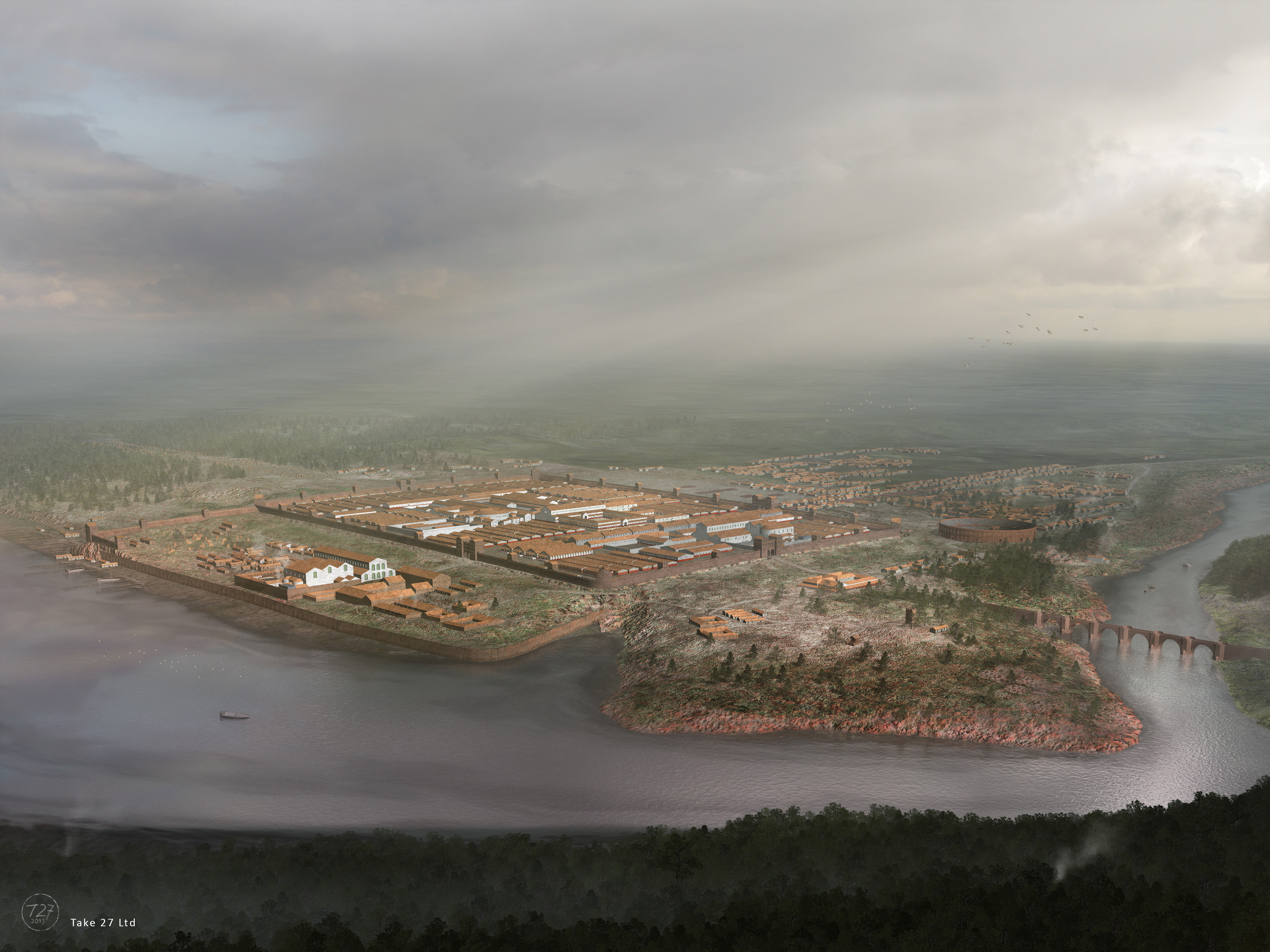
by Julian Baum
What makes the Northern March so effective is the fact that there is no singular weak point. An invader may overcome an individual section, but will then be confronted by a hundred more. Walls of varying height create overlapping fields of fire. Towers and castles can be disconnected from the rest of the system, forming bastions that can withstand any assault for weeks on end.
And the towering fortresses that serve to anchor the entire system are among the greatest in the world and pose a challenge to even the most powerful of adversaries. There is perhaps no truer example of what generals call "defence in depth". Any army attempting to move south has to fight through nearly a hundred kilometres of fortified land, garrisoned by an army over 150,000 strong.
And while not every nook and cranny can be covered at the same time, a vast net of strategically built roads and messenger posts ensures that the army will be notified within hours should any breach or assault occur. The results speak for themselves, as there has only ever been a single breach in nearly two millennia.
The March is our message to the Far North: Vardania does not bow. Vardania stands against any enemy, no matter how powerful or savage. Come and face our walls, all you will gain is blood and fire.
Sword of the Hegemony. Shield of Civilization.
1609 DA - 3329 DA
Type
Military, Army
Capital
Leader Title
Parent Organization
Related Ethnicities
It would be wrong to say that the March stops migration from the north completely. Those trying to gain entrance with violence will be smashed, but those simply seeking work or better land are usually taken in. Annual numbers vary depending on how great the south's hunger for workers and soldiers is. Entrance is given only under strict rules: large tribes are broken up, weapons have to be abandoned, and any migrant has to settle within the boundaries of the March for at least five years before being allowed further south.
Autarky
The March is completely autark. Resources, funding, and manpower are all gathered within its territory. Additional manpower is supplied by northern immigrants. Military service is the fastest way to citizenship and well paid on top, making it the main choice for nothern people trying to build a new life.
It does not mean that the Hegemony has no control over the March, however. The southern border lacks any sort of fortification, and the many crossings of the Meis are almost impossible to defend against a concentrated assault. Furthermore, the officer corps of the March is rotated out every five years, and a tight net of agents keeps watch over those present.
Eternal Neutrality
Its massive military complement makes the March a potentially powerful force in Vardanian politics. That it isn't has to do with the Oath of Neutrality, first placed upon the March by its founders in the 1600s. In the past millennia, not a single commander has intervened in southern wars and not even during the direst of wars have the Vardanians called upon the Marcher Army to come south.

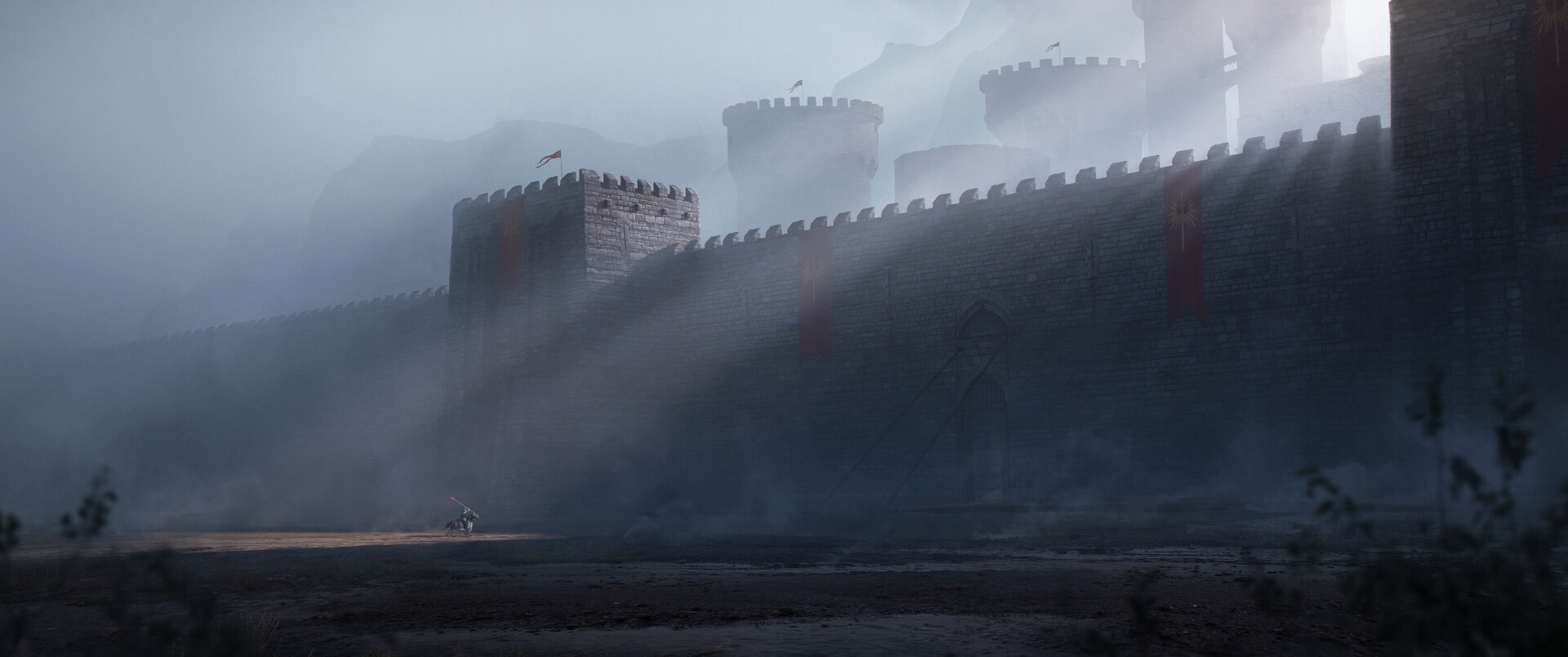

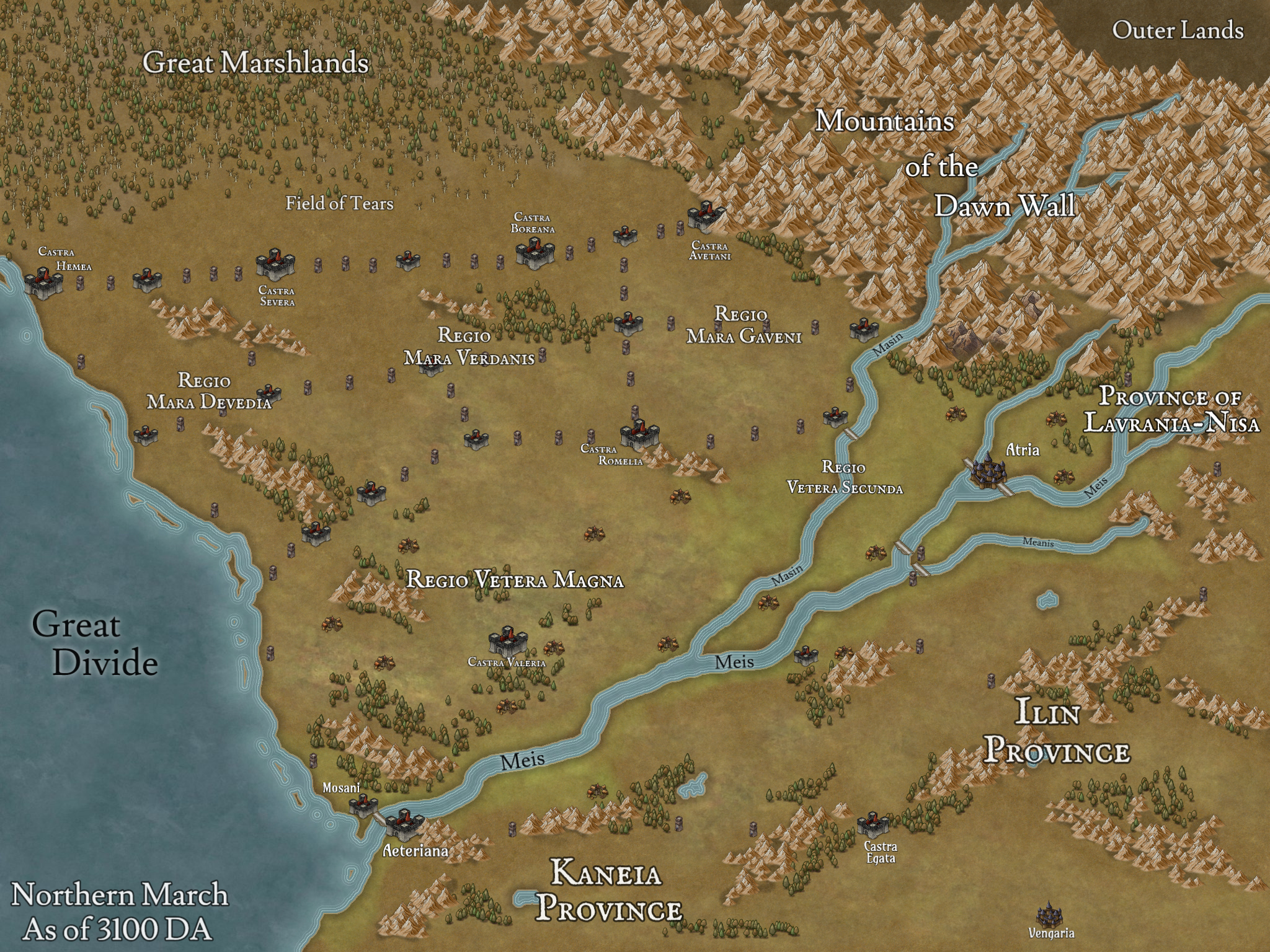
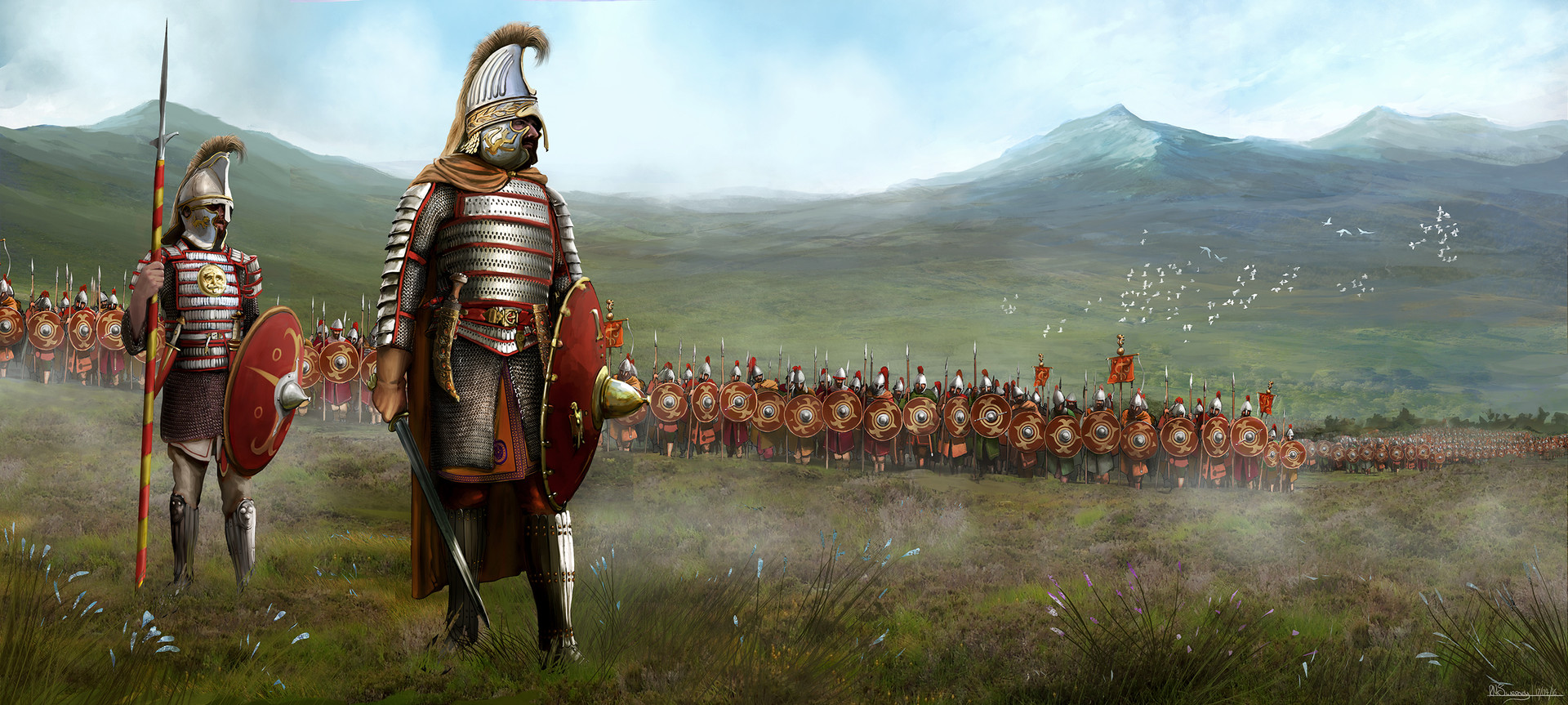
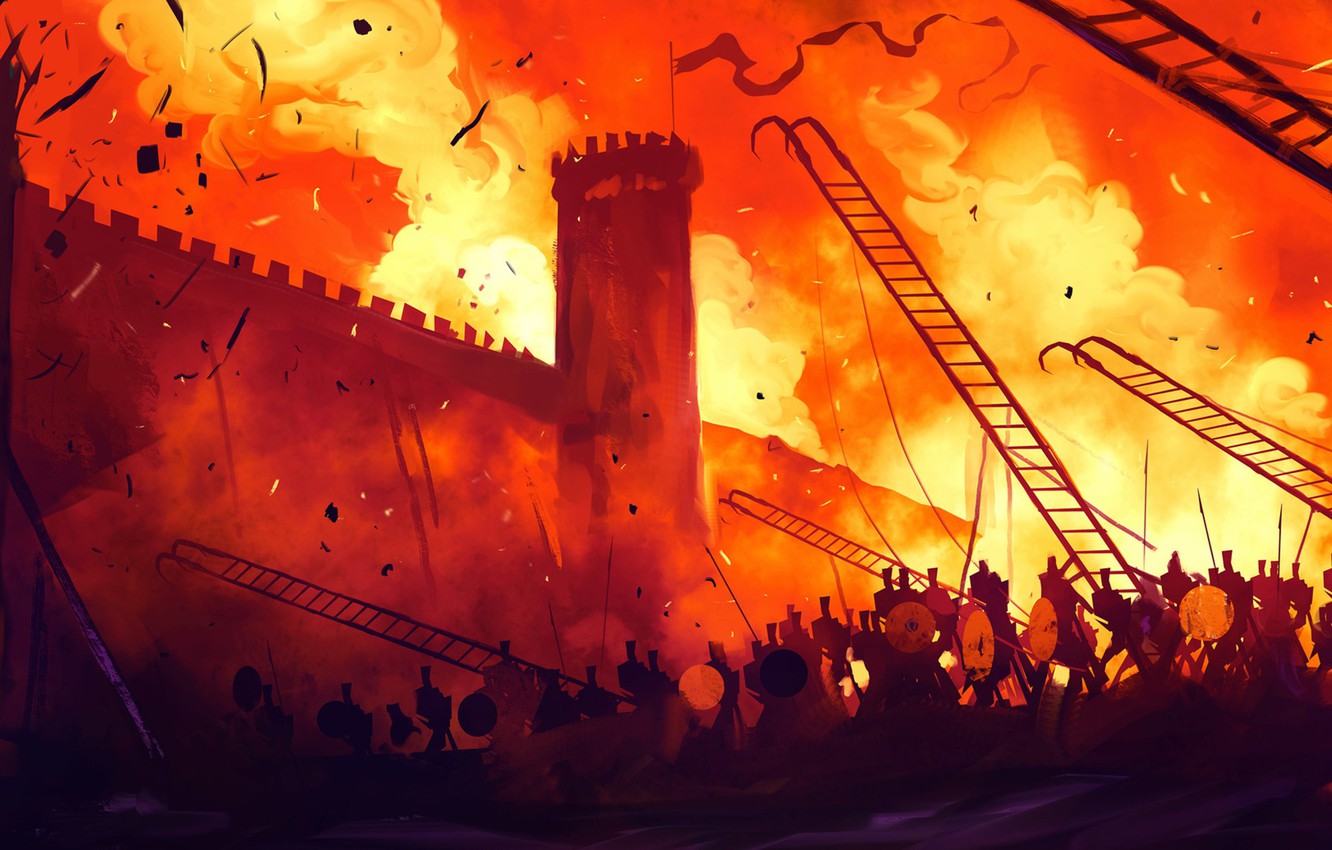

Comments